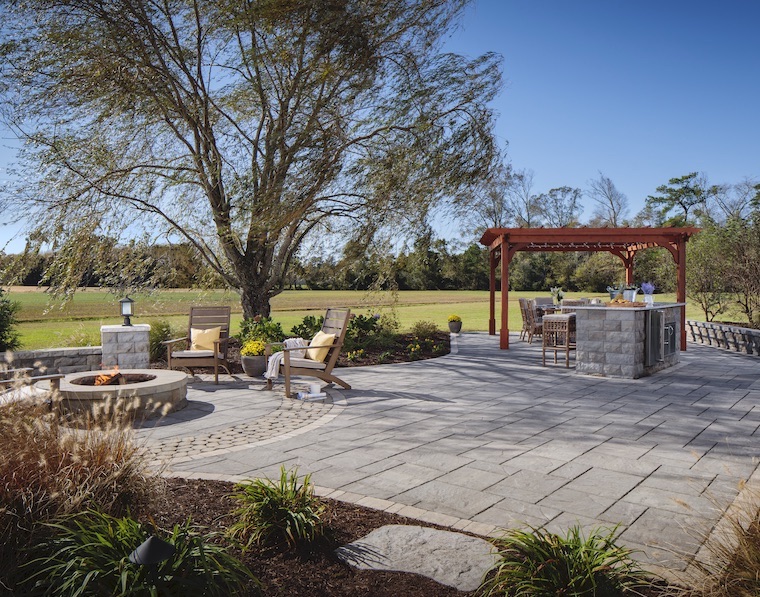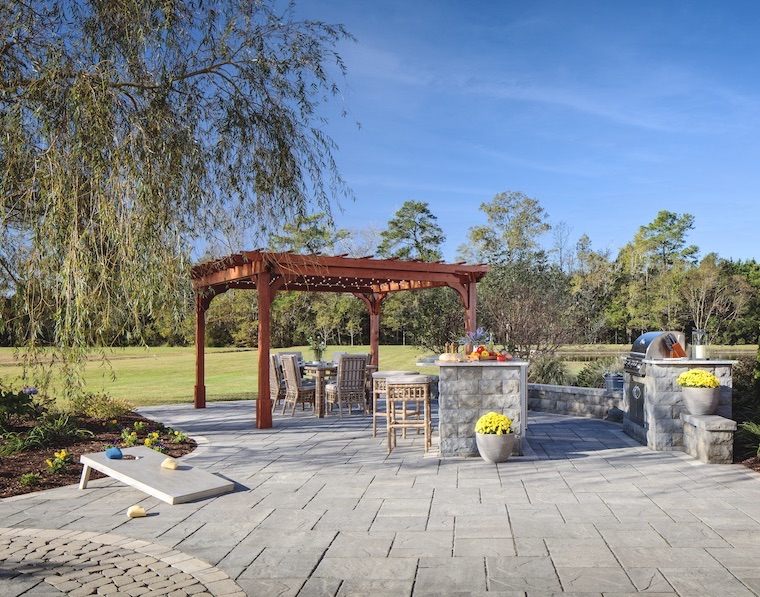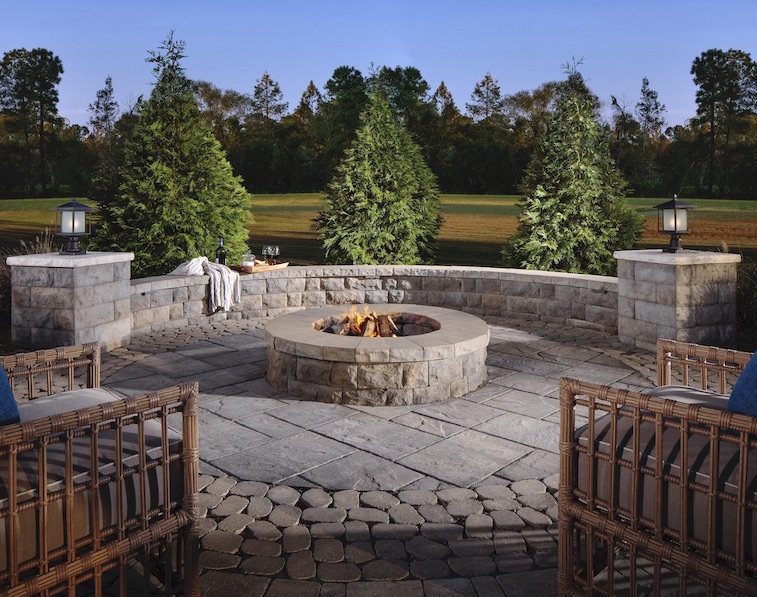The Large-scale Project Boom: What It Means for Your Business

By Joe Raboine
Outdoor living spaces have given homeowners solace during the challenging times of the past year. Spending time outdoors is proven to boost your physical and mental health in many ways, and homeowners today are retreating to the backyard for a host of reasons – such as relaxation and even remote work.
With the use cases for outdoor living shifting away from entertaining and toward functionality, the sizes of outdoor spaces are becoming larger and more complex. Outdoor living rooms, kitchens, dining areas and more are desired by homeowners to bring the outdoors in, as well as increase the value of the home when they decide to put it on the market. There’s also the benefit of decreased interest rates, making refinancing more attractive and allowing them to put aside money to create their dream outdoor living areas.
But what does this mean for contractors now tasked with building these larger-scale projects?
These large-format projects present the biggest opportunities for outdoor living professionals, and it’s important for contractors to prepare their businesses and employees for the upswing in activity and complexity. Creating an outdoor living area with multiple features is much like building a home – there is more work to be done to both prepare for and complete the project on time and within the homeowner’s budget.
There are a few best practices that are helpful for contractors to follow as large-scale projects become the norm among their customers. These basic principles will help with preparation before the project begins and streamline the process from start to finish. Four steps to tackle large-scale outdoor living projects are as follows:
- Start with quality design and planning.
Homeowners are investing a great deal of their time and hard-earned money into an outdoor living project, and contractors need to start on the right foot with proper planning and quality design. Whether contractors are utilizing their own teams or subcontracting portions of the project, it’s imperative to streamline communication to ensure proper permitting and other elements are in place.
From the design perspective, it’s critical to have professionally rendered designs for homeowners to get the right visual of their future space. Hand sketches have become a relic of the past, and customers today are looking for photorealistic representations of each element in their backyard – from the pavers on a walkway to the shine on outdoor kitchen elements. There are tools available today to help with presentation to create the perfect visual and bring the project to life for the customer.

2. Make sure the project is broken down accurately.
Homeowners diving into an outdoor living project need a thorough explanation of everything involved from start to finish. Communication is essential for customers to understand the scope of the project, the cost of each element included and the expected timeframe. The constraints of the pandemic are still present, with product shortages, shipping delays and contractor schedules filled for extended periods of time. Labor also continues to be a hurdle for many contractors. It’s important to present any delays or issues up front so they are not unexpected surprises as the project comes to fruition.
A common mistake that often leads to confusion or conflict during a project build is the budget breakdown. It’s best to keep everything streamlined and simple to avoid confusion. Provide them with the accurate total price and expected timeline so they understand exactly what they’re paying for and when they will be able to enjoy their new outdoor living space.
3. Make sure to ask the right questions.
The importance of communication during the project lifecycle can’t be stressed enough. To understand expectations, contractors and their teams need to know what features and benefits their customers are looking for, as well as suggestions they can make to enhance the space and design. A main piece of advice is to treat any project as if it was attached to your own home – get to know the customer, understand how they will utilize the space, and know their likes and dislikes in order to create the perfect, functional space. Sometimes critical elements can be overlooked – such as lighting, integration for music/speakers or shade structures to beat the heat. Start the project on the right foot with a list of questions to get in the customer’s head and be prepared to offer solutions to make the space more suitable.

4. Invest in equipment and tools for differentiation.
We live in an Amazon world, where all consumers want their products delivered as quickly as possible. But in the outdoor living world, this can be a challenge given the challenges facing the industry in terms of labor and timelines. However, with the right tools and systems, you can maximize your time, be more efficient, and differentiate yourself from the competition.
Given the state of the market, and the “I want it now” mentality, now is the time take steps to implement new technologies and systems to change and transform your business. Services, such as Belgard Rooms, are available today that make the design process smoother and simpler – allowing you to provide a realistic vision of the customer’s future space and cut down on miscommunication or costly mid-construction design changes. For contractors, these services also assist with material quantities for more efficient ordering. Research and invest in hardscape specific tools as well, such as vacuum lifts and hand tools. These tools will make installation much more efficient and will save the backs of your crew as well.
Preparing for Q4 and 2022
As we approach the end of 2021 and head into 2022, contractors should be preparing for more large projects to come their way. Even with “slow(er) season” on the horizon, bookings are up, and colder areas of the country are likely the only ones to see real breaks in their schedules. If you aren’t already using some of these best practices in your business, now is the time to start so you can better serve customers and give your business a competitive edge.
Joe Raboine is director of residential hardscapes at Belgard. He works to ensure that Belgard’s contractors and dealers are receiving best-in-class service, products and experiences. Raboine started his career as a contractor more than 25 years ago.
Since 1955, Belgard’s locally made and nationally backed products have transformed thousands of residential and commercial properties in North America. Belgard sets the standard for landscape design and innovation. For more information, visit www.Belgard.com.


